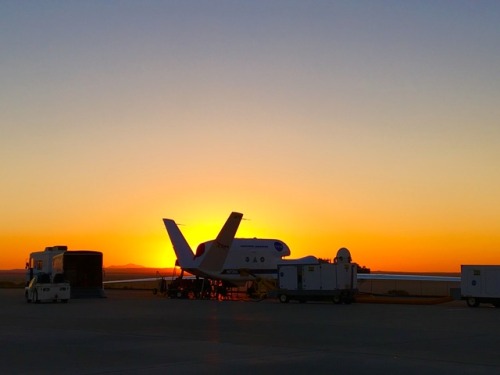Your personal Tumblr journey starts here
Robotic - Blog Posts
6 Fun Facts About Our New Hexapod Robot
Satellites are crucial to everyday life and cost hundreds of millions of dollars to manufacture and launch. Currently, they are simply decommissioned when they run out of fuel. There is a better way, and it centers on satellite servicing, which can make spaceflight more sustainable, affordable, and resilient. Our satellite servicing technologies will open up a new world where fleet managers can call on robotic mechanics to diagnose, maintain and extend the lifespan of their assets.
Our new and unique robot is designed to test robotic satellite servicing capabilities. Standing 10 feet tall and 16 feet wide, the six-legged “hexapod” robot helps engineers perfect technologies before they’re put to use in space.
Here are SIX interesting facts about the hexapod:
1. The hexapod has six degrees of freedom.

This essentially means the robot can move in six directions—three translational directions (forward and backward, up and down and left and right), and three rotational directions (roll, pitch and yaw). Because of its wide range of movement, the hexapod mimics the way a satellite moves in zero gravity.
2. It can move up to eight inches per second and can extend up to 13 feet (but usually doesn’t).

Like most space simulators, the hexapod typically moves slowly at about one inch per second. During tests, it remains positioned about nine feet off the floor to line up with and interact with a robotic servicing arm mounted to an arch nearby. However, the robot can move at speeds up to eight inches per second and extend/reach nearly 13 feet high!
3. The hexapod tests mission elements without humans.

The hexapod is crucial to testing for our Restore-L project, which will prove a combination of technologies needed to robotically refuel a satellite not originally designed to be refueled in space.
Perhaps the most difficult part of refueling a satellite in space is the autonomous rendezvous and grapple stage. A satellite in need of fuel might be moving 16,500 miles per hour in the darkness of space. A servicer satellite will need to match its speed and approach the client satellite, then grab it. This nail-biting stage needs to be done autonomously by the spacecraft’s systems (no humans controlling operations from the ground).
The hexapod helps us practice this never-before-attempted feat in space-like conditions. Eventually a suite of satellite servicing capabilities could be incorporated in other missions.
4. This type of robot is also used for flight and roller coaster simulators.

Because of the hexapod’s unparalleled* ability to handle a high load capacity and range of movement, while maintaining a high degree of precision and repeatability, a similar kind of robot is used for flight and roller coaster simulators.
*Pun intended: the hexapod is what is referred to as a parallel motion robot
5. The hexapod was designed and made in the U S of A.

The hexapod was designed and built by a small, New Hampshire-based company called Mikrolar. Mikrolar designs and produces custom robots that offer a wide range of motion and high degree of precision, for a wide variety of applications.
6. The robot lives at our Goddard Space Flight Center’s Robotic Operations Center.

The hexapod conducts crucial tests at our Goddard Space Flight Center’s Robotic Operations Center (ROC). The ROC is a 5,000-square-foot facility with 50 feet high ceilings. It acts as an incubator for satellite servicing technologies. Within its black curtain-lined walls, space systems, components and tasks are put to the test in simulated environments, refined and finally declared ready for action in orbit.
The hexapod is not alone in the ROC. Five other robots test satellite servicing capabilities. Engineers use these robots to practice robotic repairs on satellites rendezvousing with objects in space.
Watch the hexapod in action HERE.
Make sure to follow us on Tumblr for your regular dose of space: http://nasa.tumblr.com

As the sun rises, our Global Hawk is prepped for flight at Armstrong Flight Research Center on Edwards Air Force Base in California. Pre-dawn flights of our Global Hawk help beat hot summer days in Southern California. Electronic components, which are cooled by fuel onboard, only function within temperature limitations, so testing usually ceases by midday, as fuel and onboard computers become too hot to operate. The Global Hawk unmanned aircraft is used for high-altitude, long-duration Earth science missions. The ability of the Global Hawk to autonomously fly long distances, remain aloft for extended periods of time and carry large payloads brings a new capability to the science community for measuring, monitoring and observing remote locations of Earth not feasible or practical with piloted aircraft, most other robotic or remotely operated aircraft, or space satellites.
For more information, visit HERE.
Make sure to follow us on Tumblr for your regular dose of space: http://nasa.tumblr.com